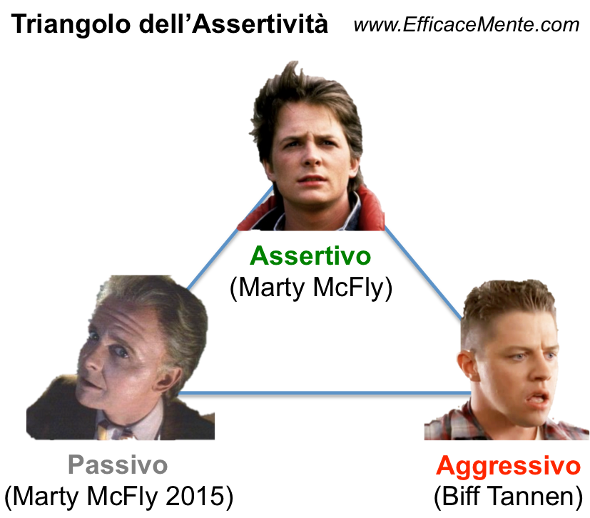
Last update: 10 September, 2019
Adolescence is a time of change. A phase of evolutionary development in which one is constantly looking for one's place in the world. Consequently, the need to experiment, know and adopt different roles. It is particularly important, therefore, that self-esteem in adolescents is high. On the contrary, they may be taking the wrong path.
During adolescence, the need to think deeply about oneself gains strength. In turn, the brain matures and new skills and abilities are achieved. All this affects the process of acquiring a new identity. Only after developing a coherent self-concept of ourselves can we build our self-esteem.
Self-esteem is the evaluation of self-concept
Self-concept is the global mental representation we have of ourselves. It feeds on self-knowledge. For example "I am very impulsive when I make decisions", "I enjoy walking my dog in the park", "I am very competitive when I play football" or "I speak very formally with my friends".
During the first years of life, self-concept is more malleable. And, therefore, more susceptible to incorporating values, evaluations and expectations coming from the figures to which we have a certain attachment. However, during adolescence, it is much less consistent, more arbitrary and variable.
By realizing who we are and how we are, self-concept also gives us some information on how much we are worth. The self-concept contains theesteem, which will depend on the evaluation we make of ourselves in relation to certain aspects.
In essence, theself-esteem in adolescents corresponds to the evaluation they make of their own self-concept. It encompasses the thoughts, feelings, sensations and experiences they have accumulated throughout their life. And they pass them through, they judge them. In this way, they can positively or negatively evaluate their self-esteem.
When self-esteem is formed
Self-esteem is forged from birth, on a par with self-concept. And it is the result of the interaction of several factors. On the one hand genetic (temperament) and on the other environmental (personal, social and cultural). All of these are assimilated and internalized with age. This self-assessment can vary over the years.
How do you rate a teenager?
When a teenager is asked to describe himself, he will usually do so based on external attributes related to his physical appearance (charm, features, build…) and on the activities he carries out (intellectual and interpersonal skills). Likewise, his vision revolves around the concepts of value and competence. For this reason, it is closely related to academic success, her social competence and her own emotional balance.
Self-esteem in adolescents experiences gender-related differences:
- Girls are used to having less and more vulnerable. They care a lot about their physical appearance, social success and academic performance.
- The self-esteem of the boys is based above all on the difficulty of respecting the stereotype of the man, as a type sure of himself, hard and intrepid.
Conduct that indicates the degree of self-esteem in adolescents
Depending on the adolescent's level of self-esteem, the remaining aspects of his life will also be affected: scholastic, family, affective, interpersonal… Furthermore, this evaluation will decisively influence his subsequent personality and his happiness.
Teenagers with high self-esteem
- They feel appreciated and accepted. They are motivated to learn, to try new things and are willing to learn about the world.
- They are usually optimistic about their future and know how to approach their problems from different points of view.
- They set themselves short and medium-term goals and objectives and are capable of taking responsibility for their own behaviors and decisions.
- They know their strengths and their weaknesses. At the same time, they know how to accept criticism, are self-critical and deal with problems.
- They enjoy emotional stability and show empathy.
- They are sensitive to the needs of others, communicate easily with the people around them and maintain a healthy network of contacts in the context in which they live.
Teenagers with low self-esteem
The behaviors that indicate low self-esteem in adolescents are guided by one lack of confidence in themselves and their abilities.
- They consider themselves inferior to others, not respected and not valued. This causes them to refuse to carry out group activities in which they have to cooperate with others.
- They feel insecurity and a paralyzing fear of failure.
- They often show a lack of discipline, commitment, and a lack of responsibility.
- In their attempt to excel and, given theirs constant need to attract attention, they lie and deceive.
- They blame others and often adopt an aggressive, violent, regressive, defiant and antisocial attitude.
What is self-esteem for?
Erikson argues that adolescence is a process of searching for identity and personal meaning. Therefore, although it usually develops in terms of hormonal crisis and chaos, it is healthy and contributes to the strengthening of the adult's ego. The conquest of identity is about the function you want to perform in the future and with the educational efforts that follow. The search for identity is a vital task.
Self-esteem helps to accept oneself and to value one's qualities. Just as we know what our faults are, we must be aware of our strengths and bring them out.
It doesn't mean being narcissistic, it means being realistic and fueling our self-evaluation. Self-esteem is a demonstration of respect for oneself and for others. Only the one who respects himself gets respected. Likewise, he who values himself induces others to do the same.


























